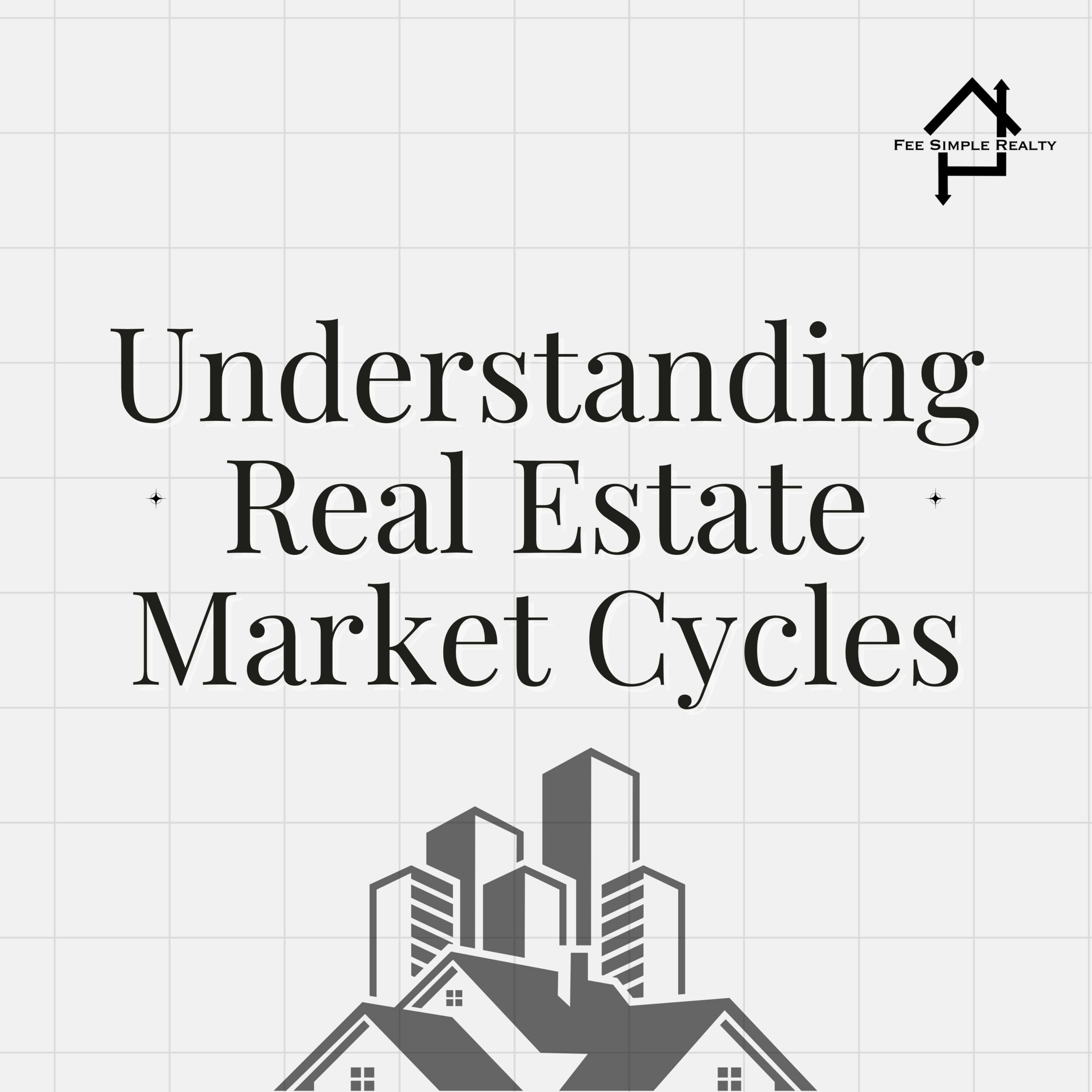Understanding Real Estate Market Cycles
The real estate market is known for its cyclical nature, characterized by periods of growth, stability, decline, and recovery. Understanding these market cycles can help buyers, sellers, and investors make informed decisions and maximize their returns. In this post, we’ll explore the different phases of real estate market cycles and what you can expect during each phase.
Overview: Phases of Real Estate Market Cycles
Phases:
- Expansion
- Peak
- Contraction
- Trough
Detailed Breakdown: Phases of Real Estate Market Cycles
1. Expansion
Simple Explanation: A period of growth and increasing property values.
In-Depth Analysis: During the expansion phase, the economy is generally strong, with low unemployment rates and rising incomes. Demand for real estate increases, leading to higher property values and increased construction activity. This phase is characterized by high consumer confidence and favorable lending conditions, making it an ideal time for buying and investing in properties.
Indicators:
- Rising property prices
- Increased construction and development
- Low mortgage rates
- High demand for housing
2. Peak
Simple Explanation: The highest point in the market cycle before a downturn.
In-Depth Analysis: The peak phase represents the market’s zenith, where property prices reach their highest levels. During this time, the market may become overheated, with prices increasing faster than the underlying economic fundamentals. While it might be tempting to buy at this stage, it’s essential to be cautious as the market is likely to transition into a contraction phase soon.
Indicators:
- Highest property prices
- Slowdown in sales volume
- Increased inventory levels
- Tightening of lending standards
3. Contraction
Simple Explanation: A period of declining property values and reduced activity.
In-Depth Analysis: During the contraction phase, the market experiences a downturn. Property values decline, sales volumes decrease, and construction slows down. This phase can be triggered by economic factors such as rising interest rates, increasing unemployment, or economic recession. For investors, this can be a time to find bargains, but it’s crucial to be strategic and well-informed.
Indicators:
- Falling property prices
- Decreased sales volume
- Reduced construction activity
- Higher mortgage rates
4. Trough
Simple Explanation: The lowest point in the market cycle before recovery.
In-Depth Analysis: The trough phase represents the market’s lowest point, where property prices stabilize after a period of decline. Economic conditions begin to improve, setting the stage for the next expansion phase. For buyers and investors, this can be an opportune time to purchase properties at lower prices before the market begins to recover.
Indicators:
- Stabilized property prices
- Low sales volume
- Increased affordability
- Early signs of economic recovery
Conclusion
Understanding real estate market cycles can help you make better decisions when buying, selling, or investing in property. By recognizing the signs of each phase, you can time your actions to maximize your returns and minimize risks. Whether you’re navigating the vibrant markets of Central Florida or elsewhere, being aware of these cycles is crucial for long-term success.
Other Related Topics
If you found this information helpful, you might also be interested in learning about the benefits of investing in rental properties, how to finance your first investment property, or the pros and cons of buying a fixer-upper. Stay tuned for more insightful real estate posts!
Contact us today or visit our Instagram | Facebook .
